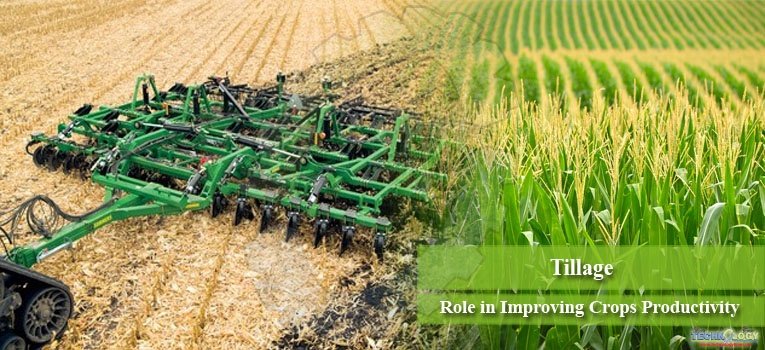Tillage: Physical manipulation of soil in order to create conditions for normal germination, emergence, growth and developments of crops.

Tilth is the physical condition of the soil after tillage operation. Moreover, it is that state of soil in which soil become airy, powdery, granular and crumbly with optimum moisture content. It is ideal state of soil.
Types of Tilth
- Fine Tilth
- Coarse Tilth
Types of Tillage:
- On season tillage (June-July or Sep-Oct)
- Primary Tillage:
- Root bed preparation
- Breaking of plough/hard pan
- Includes: Disc Plough, MB Plough
Disc Plough Moldboard Plough
- Secondary Tillage:
- Seed bed preparation
- Pulverization of soil
Disc Harrow Rotavator
- Tertiary Tillage: For intercultural operations.
- Off Season Tillage (Summer)
- Post-Harvest Tillage: – After harvest to clear weeds & crop residues.
- Summer Tillage: – To destroy soil borne pest and diseases.
- Winter Tillage: – In temperate regions to prevent winter severity.
- Fallow Tillage: – leaving the land un-cropped.
- Special Purpose Types (At any Time)
- Subsoil Tillage: – To break the hard pan or plough pan. (Chisel Plough, Sub soil Plough)
- Leveling by Tillage: – For uniform distribution of water.
- Wet Tillage: – Puddling for rice cultivation.
- Strip Tillage: – Mixing or tilling a narrow strip of soil.
Objectives of Tillage:
- Preparation of Seedbed
Make the soil weed free to prevent water and nutrient loss, make granular structure and level the soil surface which facilitates planting seed at uniform depth.
- Manipulation of plant residues and plant waste
To increase soil fertility, water penetration, water holding capacity and microbial activity.
- Controlling weeds
To control weeds effectively and economically.
- Managing water in soil
Proper moisture conservation in rain fed areas.
- Preventing wind and water erosion
Tillage makes rough soil surface containing clods ranging from 5-50 cm which help to control wind/water erosion.
Advantages of Tillage:
- Reduces wind erosion
- Reduce fuel and labor requirements
- Increase infiltration of water
- Increase aeration of soil
- Facilitate emergence of seedling
- Reduction of weeds
- Nutrients availability
Disadvantages of Tillage:
- Loss of nutrient
- Cost of pre-plant operations
- Destroy soil structure
- Soil moisture loss
- More exposure of organic matter
- Arable land changes into desert
- Exposure of weed seeds
- Soil compaction
Zero Tillage:
- Only secondary tillage should be done.
- Cost of production can be reduced by zero tillage.
- Increases the yield by 10-15%.
Conclusion:
Tillage has advantages as well as disadvantages. As we observe that by tillage, we can increase infiltration and aeration of soil but fertility of soil reducing day by day by tillage and soil compaction is increasing by use of heavy machinery on farm.
Moreover, arable land is also affected by continuous tillage. Modern research has proved that zero tillage is suitable for proper crop production and to conserve soil structure. It may also increase the yield 10-15%. So, Zero or No-Tillage is suitable for sustainable agriculture.
Talha Javed, Shahnwaz and Ahmed Mukhtar
University of Agriculture, Faisalabad, Pakistan
Corresponding Author: talhajaved54321@gmail.com